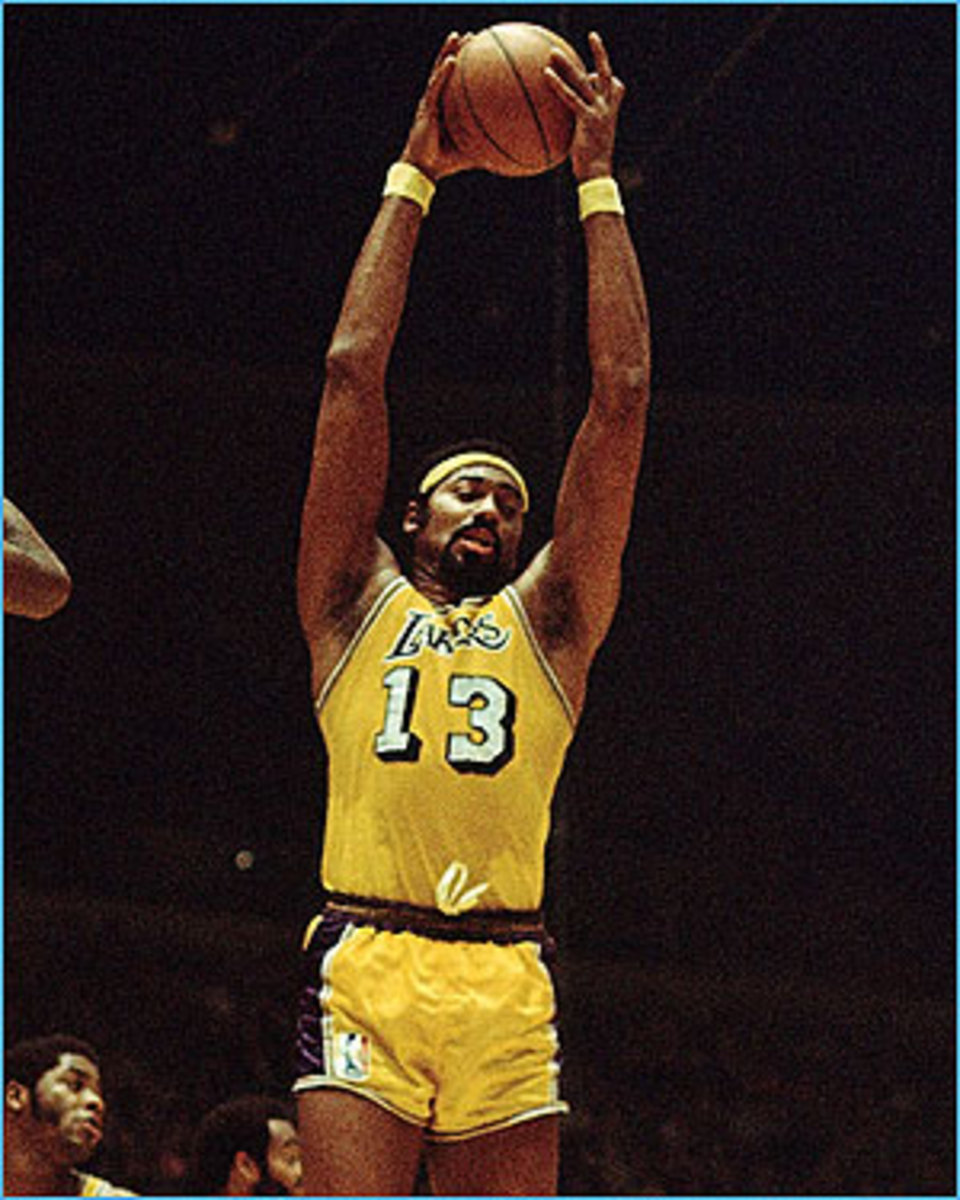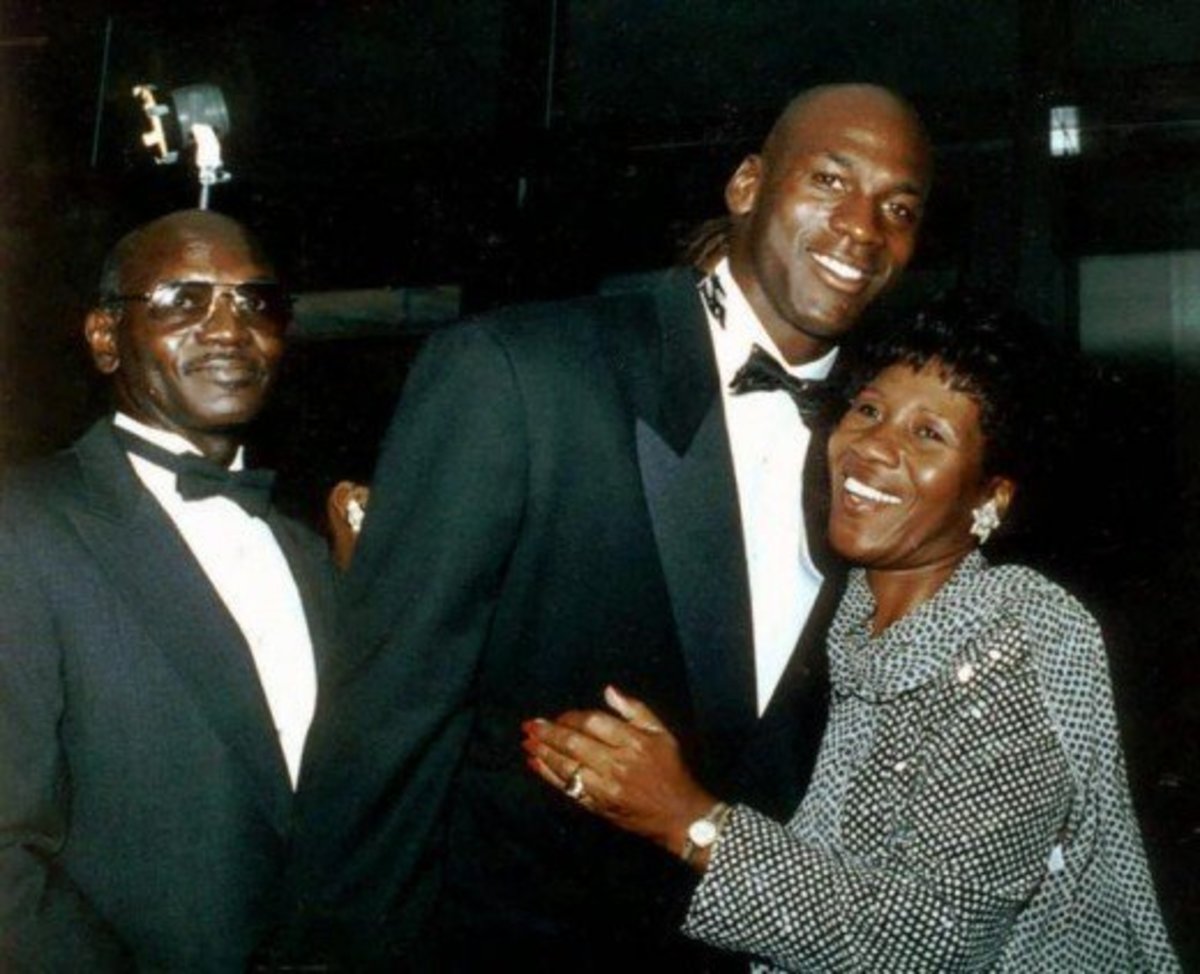(Re)Bound for Glory Part I: Evolution
INTRODUCTION
Rebounding has always been seen as key in winning basketball games, it’s one of the Four Factors of Basketball Success defined by Dean Oliver along with shooting, turnovers and free throws.
More rebounds drive to more possessions and consequently more shots, but rebounding influence goes beyond the numbers’ game, when you get your own rebound (if you do it clearly) you are one good outlet pass away from a quick attack (fast break or transition), on the other hand if you are effective enough fighting for offensive rebounds you’ll prevent your opponents from instant offense making their life harder even if you don’t get the rebound, and if you indeed get the offensive rebound you will be set to punish them with a higher FG percentage. So it's not only a matter of quantity, it’s a matter of quality too.
In this article we are going to focus on the punishment part, how NBA teams have been taking advantage of their offensive rebounds through the last twenty years.
EVOLUTION
When talking about offensive rebounds the first idea that comes to mind is a play close to the basket, with a high probability of a quick and short shot. You use to get offensive rebounds because your defender lost contact with you (failed to box out) or because you fought for the best spot and won it. In the first case you will be set for an easy basket, in the second one it depends on your position after the rebound (maybe you are now back to the basket) and your opponent’s position too (maybe he tried to jump for the ball and got himself out of the play). Looks like scoring under the basket is the best way to punish your opponent and it’s indeed the most typical way, but not the only one, the three-pointer after offensive rebound is gaining momentum and looks like the trend has plenty of room to grow.
Let’s have a look on the second chance points from 1996 to 2015, we can see how the pattern evolves, from plenty of mid-range shots in the early years to the current dual-mode (under the basket or three-pointer).
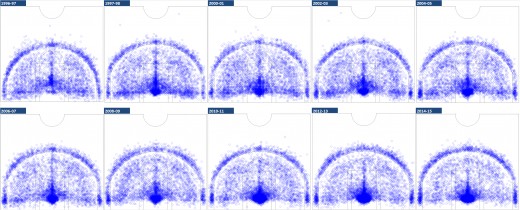
Like we can see, the 2016-17 season follows the same trend.
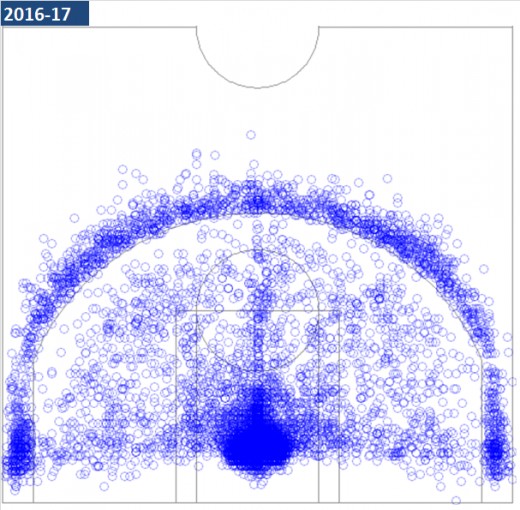
Teams have taken care of defensive rebounds in their own basket decreasing the number of shots thus second chance points conceded. That forces them to increase the profit of every offensive rebound since they are now less abundant, of course, the way to get it comes from beyond the arc. In the following graphic we can see that while the second chance points decrease the three-pointers have become a more important weapon in these situations. Note that three-pointers weight in second chance points for the 2016-17 season almost doubles the figure for the 1997-98 season (when we got the most second chance points in the series).
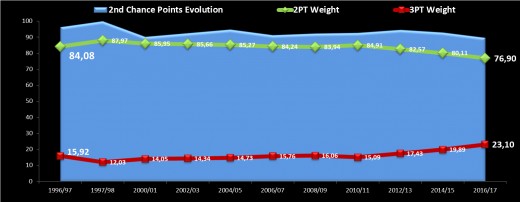
While absolute numbers for second chance points are lesser currently than twenty years ago, we can see that effectiveness has improved.
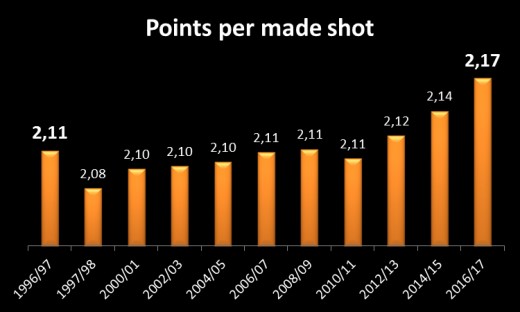
OK, we could know by now what happened (three-pointers became more important for second chance points) but the question that remains is how. Let’s think about the defense when the opponent gets an offensive rebound; positions are lost, defenders frequently have no offensive player to cover, all the attention is centered close to the basket where we can find up to four or five defenders and just a couple of offensive players, so if the offensive rebound happens the defense is caught off-guard and a single pass is enough to find uncontested shots. First question, if almost all defenders are near the basket where can you find more comfortable spots to shoot? The answer is beyond the arc. Second question, once you decide to go for a three-pointers where is the most difficult spot to cover for a dismantled defense? The answer here is in the corners. In the following graphic we can see how the activity beyond the arc is getting more and more intensive in the corners from the 2002-03 season on. As expected, defenses take adjustments through the time and for the 2016-17 season we see a more balanced activity beyond the arc, so we probably will need an extra pass (no more) to find an uncontested shot.
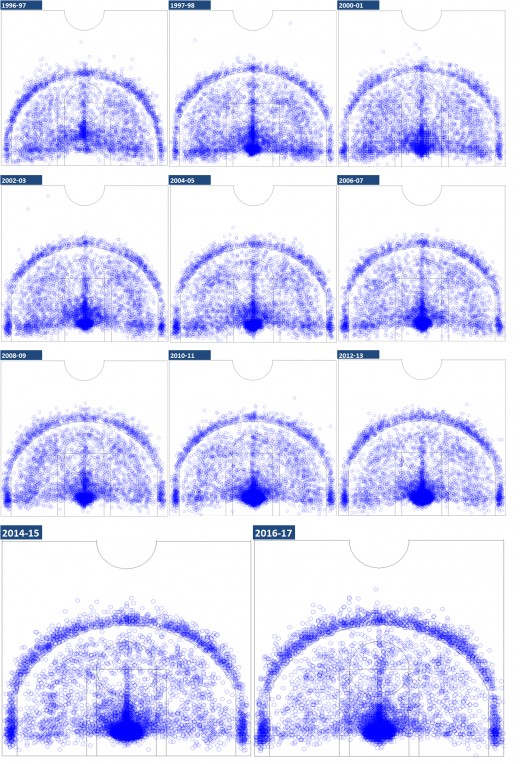
CONCLUSSIONS
Second chance points have a huge impact in both teams, the team that gets the offensive rebound uses to score with higher percentages thanks to uncontested shots, the team that concedes its rebound not only receive points, it finds more difficulties to score since they are prevented from instant offense. That’s why teams pay more attention to keep their own rebound and concede less second chance points, and that’s why the use of offensive rebounds had to become more efficient, and it happened thanks to a more intensive use of three-pointers in second chance plays.





